
The Blarney Stone is a block of Carboniferous limestone built into the battlements of Blarney Castle, Blarney, about 8 kilometres from Cork, Ireland. According to legend, kissing the stone endows the kisser with the gift of the gab. The stone was set into a tower of the castle in 1446. The castle is a popular tourist site in Ireland, attracting visitors from all over the world to kiss the stone and tour the castle and its gardens.
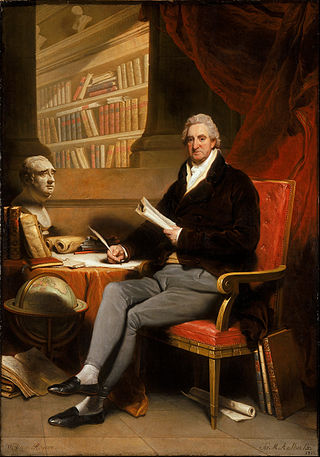
William Roscoe was an English banker, lawyer, and briefly a Member of Parliament. He is best known as one of England's first abolitionists, and as the author of the poem for children The Butterfly's Ball, and the Grasshopper's Feast. In his day he was also respected as a historian and art collector, as well as a botanist and miscellaneous writer.

Whitefriar Street Carmelite Church is a Roman Catholic church in Dublin, Ireland maintained by the Carmelite order. The church is noted for having the relics of Saint Valentine, which were donated to the church in the 19th century by Pope Gregory XVI from their previous location in the cemetery of St. Hippolytus in Rome.

Fort Perch Rock is a former defence installation situated at the mouth of Liverpool Bay in New Brighton. Built in the 1820s to defend the Port of Liverpool, its function has changed from defensive, to tourist attraction and museum. It has been used as a venue for musical concerts and has been listed as a Grade II* Listed Building. The Fort's cafe "The Mess" is open daily from 9am. A World War 2 escape room concept "Escape The Fort" runs within the fort.

Furness Abbey, or St. Mary of Furness, is a former monastery located to the north of Barrow-in-Furness, Cumbria, England. The abbey dates back to 1123 and was once the second-wealthiest and most powerful Cistercian monastery in the country, behind Fountains Abbey, prior to its dissolution during the English Reformation. The abbey contains a number of individual Grade I Listed Buildings and is a Scheduled Monument.

The Lakes of Killarney are a scenic attraction located in Killarney National Park near Killarney, County Kerry, in Ireland. They consist of three lakes: Lough Leane, Muckross Lake and Upper Lake.

Duba is a small city on the northern Red Sea coast, of Saudi Arabia. It is in Tabuk Province. Local citizens describe it as The Pearl of the Red Sea. The population of Duba is about 39,000.

Al Wajh, also written Al Wejh, is a coastal city in north-western Saudi Arabia, situated on the coast of the Red Sea. The city is located in the Tabuk Province. It is one of the largest cities in Tabuk region, with a population of 50,000 as of 2013.

Nakki Lake is a lake situated in the Indian hill station of Mount Abu in Aravalli range.
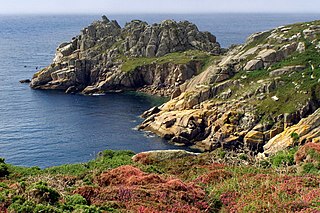
Treryn Dinas is a headland near Treen, on the Penwith peninsula between Penberth Cove and Porthcurno in Cornwall, England.
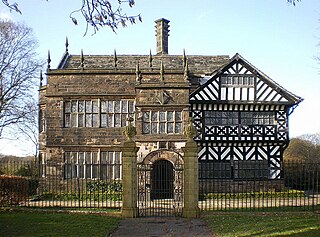
Hall i' th' Wood is an early 16th-century manor house in Bolton in the historic county of Lancashire and the ceremonial county of Greater Manchester, England. It is a Grade I listed building and is currently used as a museum by Bolton Metropolitan Borough Council. It was the manor house for the moiety of the Tonge with Haulgh township held by the Brownlows in the 16th century. The original building is timber framed and has a stone flagged roof; there were later additions to the house, built from stone, in 1591 and 1648. The name represents "Hall in the Wood' spoken in the local regional English dialect and is pronounced.
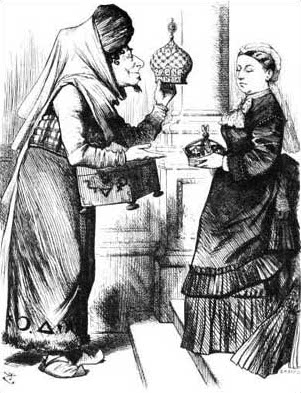
Queen Victoria has been portrayed or referenced many times.

Henry Liverseege was an English genre painter of literary and folklore subjects.

The Jama Mosque is a 17th-century congregational mosque located in the historic core of Agra, Uttar Pradesh. It was built by Jahanara Begum, the eldest daughter of Mughal Emperor Shah Jahan, during the latter's reign. It is the principal mosque in the city of Agra, and lies close to Agra Fort.

Storrs Hall is a hotel on the banks of Windermere in Storrs in the Lake District, Cumbria, England. The hotel, a Grade II* listed Georgian mansion, is also home to the National Trust-owned folly the "Temple" on the end of a stone jetty on Windermere.

Robert Brandard was a British landscape engraver and landscapist.
Samuel Austin, was an English water-colour painter.
Edward Francis Finden (1791–1857) was a British engraver.
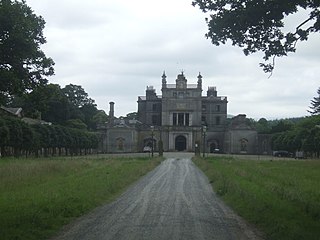
Curraghmore near Portlaw, County Waterford, Ireland, is a historic house and estate and the seat of the Marquess of Waterford. The estate was part of the grant of land made to Sir Roger le Puher by Henry II in 1177 after the Anglo-Norman invasion of Ireland. Since then, the De La Poer Beresford family has owned these estates. It is the oldest family home in Ireland.
Varanasi is a city that the Hindus all over the world consider as a holy city and a place of pilgrimage. The centrality of this city in the Hindu worldview has a direct bearing upon its presence in various forms of literature, either directly upon the city itself, or having the city in a kind of central role. Many literary works mention Varanasi occasionally, but that will not be called city literature. The literary presence of the city of Varanasi or Kashi, as it is invariably called in Sanskrit literature, can be conveniently understood by looking at the city literature divided into three groups, based on its language: Sanskrit, Hindi and English.

![]() The House in which Roscoe was Born ., painted by Samuel Austin. [1]
The House in which Roscoe was Born ., painted by Samuel Austin. [1] 
















